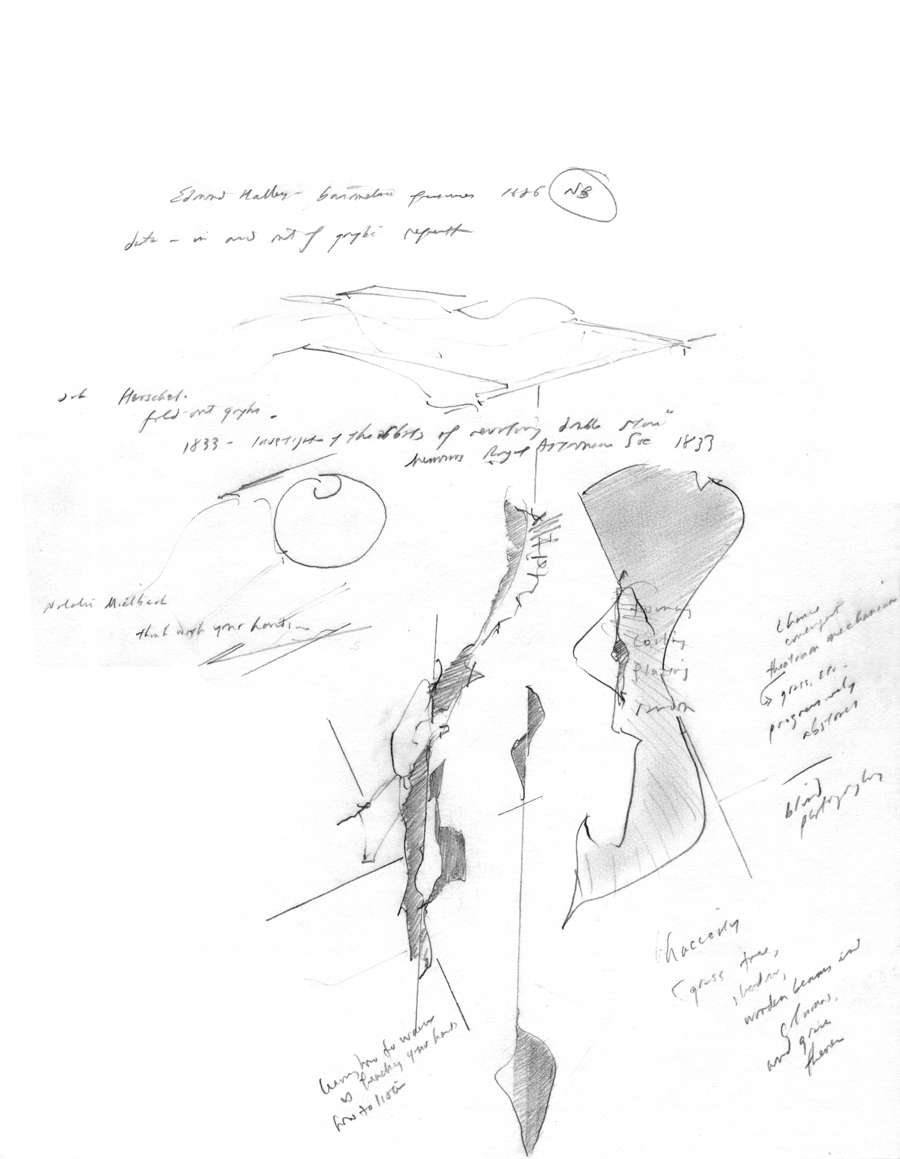hands how to listen

detail (levels altered)
p6 (of 9), notes scribbled during Thinking with your Eyes symposium, Cambridge, 27 February 2014
(this during presentations by Robin Kelsey, Nathalie Miebach)
*
#thinkeyes2014
My scribbles to the right are some thoughts related to Kelsey's mention of ongoing work on "chance and photographic perfection" — and a question about retrofitting some chance into deterged (de-dirtified) data. These got me to thinking about the progression of theatrum machinarum — those early modern atlases of machines and mechanical movements (the latter arranged in order of complexity, and much later in something like a periodic table of mechanical devices). As I recall it, the trend was from illustrative to increasingly abstract forms. Earlier scenes might show distant hills, trees, clouds, the grain of wooden columns and beams.
For earlier examples, see Bockler's Theatrum Machinarum Novum (1661) here, and
Leupold (1674-1727 *) his Theatrum Machinarum Generale (1724-39), here.
Those details are something like chance, excess, redundancy. Is a dash of chance/detail something like an ink wash, hinting at hacceity, that there's some thereness there?
Later such atlases of mechanical movements eschewed such detail, became more schematic. See the table of mechanical movements in Lanz and Betancourt, their Essai sur la Composition des Machines (1808), a section of which is visible here. Better view of the table in the scan of the second (1819) edition, via the Digital Mechanism and Gear (DMG) Library here (p194).
Thought also of the work of blind photographers. Their decisions about where to point camera, and when to "click, may look like chance to the sighted.
Learning how to weave is to teach your hands how to listen.
Nathalie Miebach
27 February 2014
tags: Nathalie Miebach; blind; chance; hacceity; scribble; thinkeyes2014